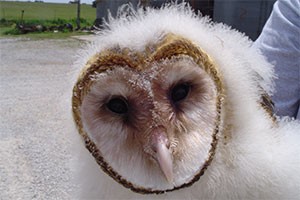Wildlife Diversity Programs

In 2005, TWRA developed a Comprehensive Wildlife Conservation Strategy (CWCS), now termed the State Wildlife Action Plan or SWAP, detailing the significance of the rare, threatened, and endangered wildlife and their habitats in Tennessee.
As a part of this State Wildlife Action Plan, TWRA Wildlife Diversity Staff conducts surveys across the state, collecting data on the absence, presence, or probable presence of species of greatest conservation need. This data is used in a model developed as a part of the 2005 CWCS.
Wildlife Diversity Biologists from across the state revised the Plan; you can read more about it at www.tnswap.com, a process that was completed in September 2015. As a part of this revision, the conservation statuses of all wildlife within the state were assessed.
The habitat preferences of all terrestrial species were reviewed, linking species with their preferred habitats. These preferences, along with species occurrences, were also mapped.
An addition to the 2015 SWAP was the development of Conservation Opportunity Areas throughout the state. Management and conservation opportunities will be determined within these conservation areas to maximize the conservation of all wildlife.
The inclusion of climate change and assessment of impacts as a result of climate change was also the main goal of the 2015 SWAP. To aid conservation efforts in a world with a changing climate, biologists and conservationists will seek to identify areas where conservation actions may be needed to conserve the diversity of wildlife despite changes to habitats resulting from a change in the climate.
Wildlife Diversity staff conduct numerous projects as well as participate in projects occurring across the state. These surveys are used to monitor populations of nongame species, collect data and information beyond the typical presence / probable absence data, and further our knowledge of these unique animals within middle Tennessee.
The Wildlife Diversity Program in Tennessee oversees data collection, data management, and monitoring, and assists with the management of all non-game wildlife throughout the state.
In an effort to document the presence or probable absence of nongame species inhabiting TWRA’s wildlife management areas, our wildlife diversity survey manager conducts surveys throughout the year. The data collected from these efforts aid with the management decisions of our lands. The data is also used in models developed as a part of the State Wildlife Action Plan.
A number of methods are used to document nongame wildlife in our wildlife management areas. Drift fences are established to capture amphibians, reptiles, and small mammals. Coverboards are used to capture amphibians and reptiles. Live capture Havahart and Sherman traps are used in the documentation of small mammals. Bats are captured with mist nets and harp traps, and the calls of bats are recorded with acoustical devices.
Standard point counts are used to document the presence of birds. Many more techniques are used to document the wildlife on state lands and are used in different situations based on the species being targeted.
Previous surveys have been conducted on:
- Bark Camp Barrens WMA
- Hickory Flats WMA & May Prairie SNA
- Maple Springs WMA
- Cowan Marsh Wetland
- Owl Hollow Mill WMA
- Mingo Swamp WMA
- Bear Hollow Mountain WMA
Diversity Program Pages
- Barrens Top Minnow Population Monitoring
- Gray Bat Winter Monitoring and Summer Banding
- Green Salamander Habitat and Monitoring Program
- Golden Eagle Surveys and Telemetry
- Hellbender Presence/Absence Surveys and Habitat Quantification
- Indiana Bat Migration and Summer Habitat Use
- Snake Fungal Disease
- Tennessee Amphibian Monitoring Program
- Tennessee Bat Working Group
- Tennessee Lake Sturgeon Project
- White-nose Syndrome Monitoring
